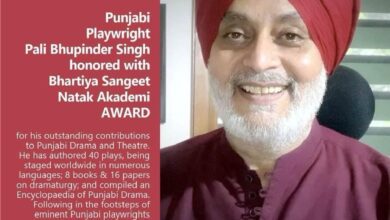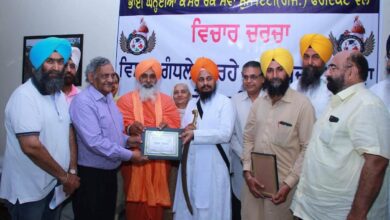The Battle of Saragarhi

The Battle of Saragarhi
Mission aut vin-ce-re aut mor-ri.
By
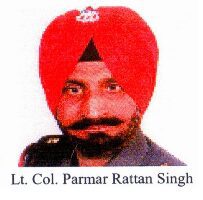
“The history of the Nations is written
with the tip of the soldiers’ swords.
Also, the foundation of the Nation’s
peace and prosperity is laid
over the spilled blood and bones
and scattered
limbs and ashes of soldiers.”
The God and the soldiers we adore
At the time of trouble and not before.
The time passed, and things righted,
God is forgotten, and soldiers are slighted.
Battle
The contingent consisting of twenty-one brave and invincible Sikh soldiers, under the dynamic, exuberant, flamboyant leadership of Havildar Ishar Singh, was deployed at Fort Saragarhi. They all chose to fight to the death in the best tradition of their race and Regiment. The battle is well-known outside military schools of instruction. That battle is “considered by some military historians as one of history’s great Last stand.” The battle of Saragarhi is the epitome of raw courage, sheer grit, and unshakable determination.
History records that “the battle of Saragarhi is one of the eight stories of collective bravery published by UNESCO. The battle has been mentioned as one of the five most significant events of its kind in the world. It includes the battle of Thermopylae associated with the heroic stand of small Greek force against the mighty Persian Army of Xerxes in 480 BC.”
The battle of Saragarhi was fought on Sunday, September 12, 1897, by 21 brave and invincible Sikh soldiers from the XXXVI Sikh Regiment. The regiment has since been redesignated as the 4th Battalion, the Sikh Regiment.
The Sikh contingent was under the dynamic leadership of Havildar Ishar Singh. They fought against ten to twelve thousand Afghan guerrillas.
The Afghan guerillas were commanded by Gul Badshah, said to be a seasoned warrior and able commander, well known in the art of scientific art of warfare.

All the 21 brave, resolute, and undaunted, Sikh soldiers were fully aware that they were facing mission impossible, a “mission aut vin-ce-re aut mor-ri.”
They were grossly outnumbered, and the fort of stones and mud walsl wasn’t strong enough to withstand the onslaught of about 10,000 to 12,000 of the enemy. Fort Saragarhi had main wooden gate only studded with iron. It had many disadvantages such as it was isolated that could easily be cut off and difficult to reinforce. But the undaunted brave Sikh soldiers were just not prepared to hand over the post to the attackers as it and to withdraw and seek safety elsewhere. These brave and invincible Sikhs preferred sacrifice rather to surrender. That action was a self-sought sacrifice. The defenders fully knew that that was a mission impossible. They all fought to death.
Tough times never last, but tough people do.
The enemy themselves admitted that they had suffered more that 200 killed and more than 250 of their guerrilla wounded in that battle.
The heroic deeds of those invincible 21 Sikh soldiers were placed before Her Majesty Queen Victoria. The story, when narrated in the British Parliament, drew from all the members standing ovation in the memory of those undaunted brave Sikh soldiers who defended the post of Saragarhi. All those valiant Sikh soldiers, the heroes of the battle of Saragarhi, were decorated with the “Indian Order of Merit,” the highest distinguished gallantry award for conspicuous bravery in the face of the enemy, conferred upon Indian troops that time. Besides, the dependents of all those brave soldiers of the XXXVI (36) Sikh Regiment were awarded each Indian Rupees. Five hundred and fifty acres of farmland.

Indian Order of Merit
Never in the Commonwealth’s military history had the equivalent of 21 Victoria Crosses been awarded to a single unit in a single battle. In Military history, that was the only unit whose all members were decorated with the highest wartime award.
The Roll of Honor, with Regimental Numbers –
165. Havildar Ishar Singh. Detachment Commander
332. Naik Lal Singh. 546. Lance Naik Chanda Singh.
163. Sepoy Ram Singh. 182. Sepoy Sahib Singh.
287. Sepoy Ram Singh. 359. Sepoy Hira Singh.
492. Sepoy Uttar Singh. 687. Sepoy Daya Singh.
760. Sepoy Jivan Singh. 791. Sepoy Bhola Singh.
814. Sepoy Gurmukh Singh. * 834. Sepoy Narayan Singh.
871. Sepoy Jiwan Singh. * 1221. Sepoy Nand Singh.
1257. Sepoy Bhagwan Singh. 1265. Sepoy Bhagwan Singh.
1321. Sepoy Sundar Singh. 1556. Sepoy Buta Singh.
1651. Sepoy Jivan Singh. 1733. Sepoy Gurmukh Singh
(*) No. 814 Gurmukh Singh and No. 871 Sepoy Jiwan Singh belonged to one and the same village, Damunda, in the district of Jalandhar, Punjab. Both belonged to Minhas clan.
There were two Gurmukh Singh. It is unclear which of the two was the signaller who sent the last signal and was the last to attain martyrdom.
On Tuesday, September 12, 2023, incidentally, I met Sardar Amarjit Singh. He is a descendant of the family of No. 163 Sep Ram Singh. He is settled in Rocky View County, Alberta, Canada.
STATUE
In 2021, the British Government, honoring the dynamic leadership of Havildar Ishar Singh, had erected his statue.
The valor and gallantry displayed by those 21 Sikh soldiers of 36 Sikh Regiment, the heroes of the battle of Saragarhi, is summed up in these verses –
On Saragarhi’s ramparts died,
The bravest of the brave.
Beneath Saragarhi’s ruined walls,
They found a fitting grave.
For Saragarhi bears the fame,
They gave their lives to save
Here is stanza from Guru Gobind Singh’s compositions –
‘Chiriyan Ton Mein Baaz Turaoon,
Sava Lakh Se Ek Ladaoon,
Tabay Gobind Singh Naam Kahaoon’,
I shall call myself (Guru) Gobind Singh
if I can make meek sparrows pounce
upon the mighty hawks and tear them,
only if one combatant of my force faces a
lakh and quarter (one hundred and
twenty-five thousand) legion of the enemy.
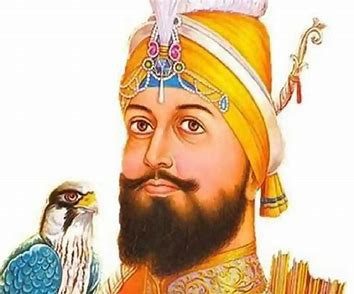
At Saragarhi, the meek force ex 36 Sikh Regiment consisting of only twenty-one undaunted Sikh soldiers under the dynamic leadership of Havildar Ishar Singh left the enemy, mighty hawks of 12 thousand with their ‘none bleeding.
The battle of Saragarhi brought the concept of “Last man, last round.”
Mine Efforts
That unique battle was fought on Sunday, September 12, 1897. And September 12, 1997, was the centenary commemoration of the battle. I took up courage and penned all the collected information about that great epic battle from various resources including the Saragarhi Gurdwara at Amritsar. Those days I was NOT lucky enough to have the facilities of internet. I mailed the article to couple of newspapers and magazines and those were published from City of Calgary, in the Province of Alberta, Canada. The media proudly ran the article that appeared on Friday, September 12, 1997.
I had displayed relevant details of the Battle of Saragarhi in The Military Museum, Calgary. Some details and pictures were got from the War Office London that too are displayed there. The Museum is open to war veterans without any entry fee, Monday through Friday.

Author in front of the showcase
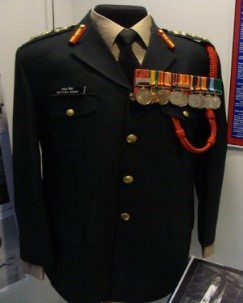

;
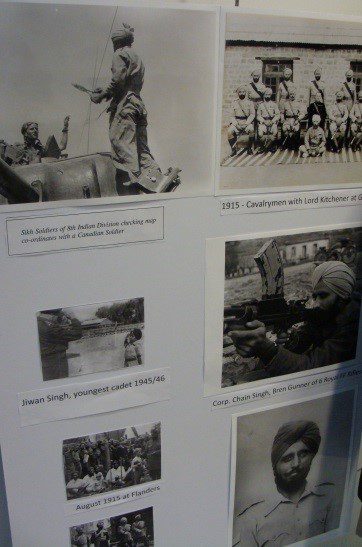
I conclude with the Motto of Sikh Regiment.
Nischay Kar Apni Jeet Karoon
With determination, I will be triumphant.




